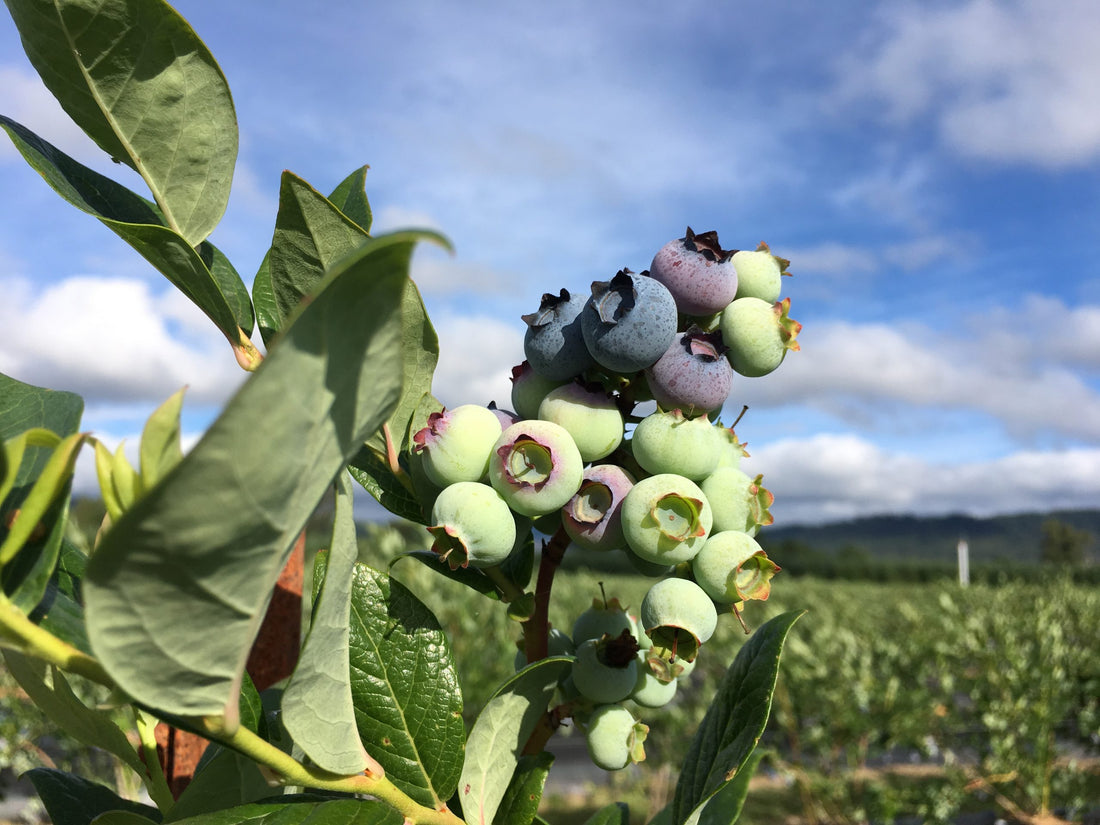Do I Need Multiple Blueberry Plants for Better Pollination and Fruit Production?
If you’re growing blueberries and want to maximize your harvest, you may be wondering if planting multiple blueberry bushes can improve pollination and fruit yield. While some blueberry varieties are self-pollinating, many will produce more and larger berries when planted alongside compatible varieties for cross-pollination. In this guide, we’ll explore the benefits of planting multiple blueberry plants, how cross-pollination works, and the best varieties to grow together for enhanced fruit production.
Self-Pollination vs. Cross-Pollination in Blueberries
Blueberry plants fall into two categories: self-pollinating and cross-pollinating. Understanding the difference is key to planning your blueberry garden:
-
Self-Pollinating Varieties: Self-pollinating blueberries are capable of producing fruit on their own, as they have both male and female parts on the same flower. However, even self-pollinating varieties will benefit from the presence of other blueberry plants nearby.
-
Cross-Pollinating Varieties: Cross-pollination occurs when pollen is transferred between different varieties of blueberry plants. This process increases the likelihood of successful fruit development, leading to larger berries and a more abundant harvest.
In general, cross-pollination is recommended for all blueberry plants, as it leads to bigger and better-quality berries. Planting multiple blueberry varieties together ensures optimal pollination and a more productive harvest.
Benefits of Planting Multiple Blueberry Plants
There are several advantages to planting more than one blueberry variety:
- Increased Yield: Cross-pollination results in more flowers being pollinated, which increases the overall number of berries produced.
- Larger Berries: Berries tend to be larger and juicier when multiple varieties are grown together, as cross-pollination enhances fruit development.
- Extended Harvest Period: Different blueberry varieties ripen at slightly different times, allowing you to extend the harvest season by planting early, mid, and late-season varieties together.
Best Blueberry Varieties for Cross-Pollination
Different types of blueberry plants—such as highbush, lowbush, and rabbiteye—benefit from cross-pollination with compatible varieties. Here are some popular choices for cross-pollinating blueberry plants:
1. Highbush Blueberry Varieties (Vaccinium corymbosum)
Highbush blueberries are one of the most common types grown in home gardens. They’re self-pollinating but produce better yields when paired with other highbush varieties.
-
Recommended Varieties:
- Legacy Blueberry: A versatile, mid-late season variety with sweet berries.
- Bluecrop Blueberry: Known for its large, flavorful berries and productivity.
- Patriot Blueberry: An early-season variety that pairs well with other highbush plants.
- Duke Blueberry: A reliable early-season variety with a high yield.
2. Rabbiteye Blueberry Varieties (Vaccinium ashei)
Rabbiteye blueberries are popular in warmer climates and generally require cross-pollination for optimal fruit production.
-
Recommended Varieties:
- Brightwell Blueberry: A mid-season rabbiteye that’s highly productive and great for cross-pollinating.
- Climax Blueberry: Early-ripening and pairs well with other rabbiteyes.
- Powder Blue Blueberry: Late-season and ideal for extending the harvest period.
- Tifblue Blueberry: A versatile rabbiteye variety with excellent flavor.
3. Lowbush Blueberry Varieties (Vaccinium angustifolium)
Lowbush blueberries are often found in the wild and are mainly cross-pollinated by insects. While they’re not as commonly cross-pollinated with other varieties, planting multiple lowbush plants together can still improve fruit set.
-
Popular Varieties:
- Vaccinium angustifolium: Commonly known as lowbush blueberry, often grown in clusters to promote better pollination.
Tips for Successful Cross-Pollination
To maximize pollination and yield, follow these tips for planting and positioning your blueberry bushes:
-
Plant Compatible Varieties Close Together: Ideally, plant blueberry bushes within 5 to 10 feet of each other to allow bees and other pollinators to easily transfer pollen between plants.
-
Choose Varieties with Overlapping Bloom Times: For cross-pollination to occur, it’s essential that the blueberry varieties bloom around the same time. Pair early-season varieties with other early-blooming varieties, and the same for mid- and late-season plants.
-
Encourage Pollinators: Bees are the primary pollinators of blueberry plants. Attract pollinators to your garden by planting bee-friendly flowers nearby and avoiding pesticides, which can deter or harm beneficial insects.
-
Consider Adding Wild Blueberry Varieties: Wild blueberries can also be excellent cross-pollinators for cultivated varieties and help diversify your harvest.
Common Questions About Blueberry Pollination
-
Can I grow just one blueberry bush and still get fruit?
Yes, you can grow one self-pollinating blueberry bush and still produce some fruit. However, the yield will be significantly lower than if you plant multiple bushes with compatible varieties. -
How far apart should I plant different varieties for cross-pollination?
For optimal cross-pollination, plant blueberries within 5 to 10 feet of each other. This distance allows for effective pollen transfer while providing enough space for growth. -
How do I know if my blueberry bushes are properly pollinated?
After pollination, blueberry flowers will start to form small green berries. As the season progresses, these berries will ripen into the plump, blue fruit we enjoy. -
Can I mix different types of blueberries (highbush, lowbush, rabbiteye) in the same garden?
Yes, you can mix different types of blueberries, but be aware that they may have different growth habits, spacing needs, and care requirements. Rabbiteye and highbush varieties generally cross-pollinate well together, but lowbush varieties are best grouped with other lowbush plants.
Ideal Planting Layout for Cross-Pollination
If you have enough space, consider planting blueberries in rows or clusters to promote easy pollination. Here’s a simple layout to maximize pollination and berry production:
-
Row Planting: Plant different blueberry varieties in alternating rows. For example, an early-season row of Duke blueberries followed by a row of Bluecrop and then Patriot blueberries will ensure consistent cross-pollination throughout the growing season.
-
Cluster Planting: In smaller gardens, plant two to three blueberry bushes close together in a cluster. This layout provides easy access for pollinators and encourages high yields with minimal space.
-
Container Planting: If you’re growing container blueberry plants, arrange the containers close together during the blooming period to facilitate pollination.
Conclusion
While some blueberry varieties are self-pollinating, planting multiple varieties together is highly recommended for better pollination and a more fruitful harvest. Cross-pollination among compatible varieties results in larger, sweeter berries and a higher yield overall. Whether you’re growing highbush, lowbush, or rabbiteye blueberries, the simple act of planting compatible varieties close together will help ensure a bountiful blueberry season year after year.
With proper planning and a mix of early, mid, and late-season varieties, you can extend your harvest and enjoy fresh blueberries all summer long. By creating an environment that encourages cross-pollination, you’ll be well on your way to cultivating a vibrant and productive blueberry garden.







